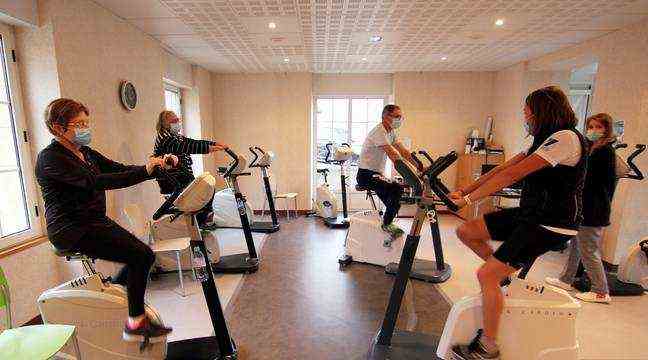As he takes off the heart monitor that encircled his chest, Christian smiles. Aged 63, he has just completed one of the first sessions of his re-education through sport. A smooth recovery for this young senior, victim of a heart attack in early July. “When you’re all alone, at home, you tend to stay on your sofa,” says the man who previously practiced club fencing. For the past three weeks, Christian has been participating in the “Ace of the Heart” program based on the principle of “prescription sport”. For five months, he will have two weekly sessions with a coach specializing in cardiac rehabilitation at the Saint-Yves clinic, in Rennes (Ille-et-Vilaine). But Christian will not have to take a euro out of his pocket: his entire program will be supported by Social Security. With a clear goal: to ensure that his state of health improves in order to avoid further expenses.
The idea of reimbursing health sport activities is not new. But since its emergence five or six years ago, its deployment has been slipping. Alain Fuch knows something about it. President of the association Azur sport santé, the medical consultant tries to convince the authorities of the merits of rehabilitation through sport. In 2014, he carried out an experiment with 50 people suffering from cardiovascular pathologies. While they “cost” 4,000 euros in health costs per year, these patients who returned to sport with a personal trainer lowered the bill by 1,300 euros. “We no longer have to demonstrate that physical activity has a positive impact on health, that is known. But we have shown that it also saves money, ”says Alain Fuch.
The #LawSport offers an extension to chronic diseases (hypertension, diabetes, obesity, asthma, etc.) of prescription sports prescription and the possibility for specialist physicians to prescribe APA. pic.twitter.com/XPQZHNnfe8
– Ministry of Sports 🗼🇫🇷 (@Sports_gouv) March 22, 2021
“We pay upstream to avoid treating downstream”
This financial element has enough to convince Health Insurance, which would not say no to some savings, especially “after twenty-two months with open pockets”, as Arnaud Boyer underlines with reference to the Covid-19 epidemic. “It is estimated that these five months of healthy sport cost around 600 euros per patient. If you compare that to having a stent, it’s not even the cost of the dressing and the hospital night. We pay upstream to avoid treating downstream, ”continues the deputy director of the CPAM of Ille-et-Vilaine.
In the Breton department, around forty patients who have suffered a heart attack are participating in this new experience. “There are people who don’t like to run. But we can all find a convivial activity. Our objective is to develop the notion of pleasure in sport, to develop a habit for the patient so that he can continue his physical activity once back home ”, explains Céline Chouhan, head of the rehabilitation service of the Saint-Yves clinic.
“When you’re all alone, it’s not funny”
In Ille-et-Vilaine, the clinic specializing in the follow-up care of patients suffering from cardiac pathologies is not the only one authorized to put patients back on their feet. Sports coaches working in fitness centers such as L’Orange Bleue (in Vern-sur-Seiche) and The Sunrise center (in Fougères) have also been trained in the reception of fragile patients. “It’s important to be supervised. When you’re all alone, it’s not fun, ”admits Camille Le Marre, an adapted physical activity teacher. After her heart attack, Brigitte had lost all her strength. This great sportswoman of 72 years tells. “I couldn’t do anything more. As soon as I climbed two steps, I was out of breath. I wanted to let go of everything ”. Thanks to group lessons alternating cardio and muscle strengthening, Brigitte sees her daily life improve every day. And the likelihood of relapsing fades away.
Launched in October, the operation “As du cœur” is deployed in eleven French departments and should concern 600 to 700 patients in total. The objective of the Azur Sport Santé association is to show the impact both on the health of patients and on the health insurance wallet. “And if it’s good for heart patients, we know that it will also work for cancer patients or diabetics”. Cardiovascular disease is the second leading cause of death in France, after cancer. Their treatment costs 18 billion euros each year, or 10% of the country’s health expenditure.

